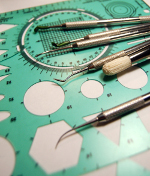Diagnosing Cancer
Author: John Published Under: Health

If after a cancer screening or if the symptoms of cancer are present, it is important to find out what caused these results or symptoms. This process involves preforming tests and analyzing the persons medical history, including that of their family, to diagnose the problem.
There are a number of tests that are preformed to detect and diagnose cancer, including laboratory work, x-rays, and biopsy.
Lab Work
One of the first test used to diagnose cancer is the checking of blood, urine, and other bodily fluids. These fluids are collected and sent to a lab to be tested. A lab test can detect how well the organs of the body are preforming their jobs, as well as checking for abnormalities and high levels of certain types of cells or other substances, which often indicate cancer.
It is important to remember that lab tests can indicate that cancer might be present, but they are rarely inclusive on their own. Instead, when diagnosing cancer, lab tests are only part of the solution.
X-Rays and Body Imaging
One of the most effective ways to detect cancer is to physically look at parts of the body and inspect them for cancer. Since it is not practical to preform surgery to do this, x-rays and other types of imaging procedures are usually preformed.
- X-Rays: X-Rays are the most common type of imaging procedure, which shoots the body with a type of radiation, creating a image of internal bones and organs.
- Computer Tomography Scans(CT Scans): A CT Scan is similar to an X-Ray, except the machine is linked to a computer, which takes a number of very detailed images of the bodies organs. Often, a special die is given to the patient prior to preforming a CT Scan, which makes the organs easier to see.
- Radionuclide Scan: During a Radionuclide scan, the patient is given an injection of a radioactive material. This radioactive material then flows through the body in the blood stream, collecting in some types of organs and bones. A special scanner then scans the body, detecting and measuring the levels of the radioactive meterial. This creates a picture of these organs, with the radioactive material than leaving the body.
- UltraSound: An Ultrasound is used to create pictures of images organs and shoots sound waves into the body. In the same manner as a radar, the sound waves bounce off of organs, creating an image called a sonogram.
- Magnetic Resonance Imaging(MRI): An MRI uses a very strong magnet that is attached to a computer system. This magnet allows the MRI to create incredibly detailed images of the internal body parts.
- Positron Emission Tomography Scan(PET Scans): PET Scans check to see how the body reacts to injected radioactive materials, with high levels of activity often being an indication of cancer.
Biopsy
The biopsy is often one of the most effective ways of detecting cancer, because part or all of a suspected tumor or piece of tissue is removed and physically checked in the lab. A special laboratory technical, called a pathologist, is then able to examine the tissue using a microscope.
There are several ways that a biopsy can be preformed.
- Using a Needle: Sometimes, the doctor is simply able to use a needle to remove fluid or tissue from the growth or area in question.
- Using an Endoscope: An endoscope is a lighted tube that is very thin, which is used to inspect parts of the body, such as the colon. Most endoscopes can also remove cells or tissues.
- Using Surgery: It is sometimes necessary to preform surgery to remove a portion of the cell. There are two types of surgeries, specifically excisional or incisional.
During an excisional biopsy, the entire tumor is removed from the body, as well as, in some cases, other tissue around the tumor.
During an incisional biopsy, only pat of the tumor is removed.